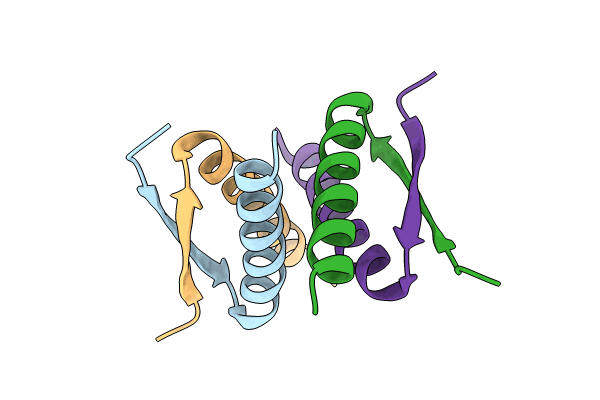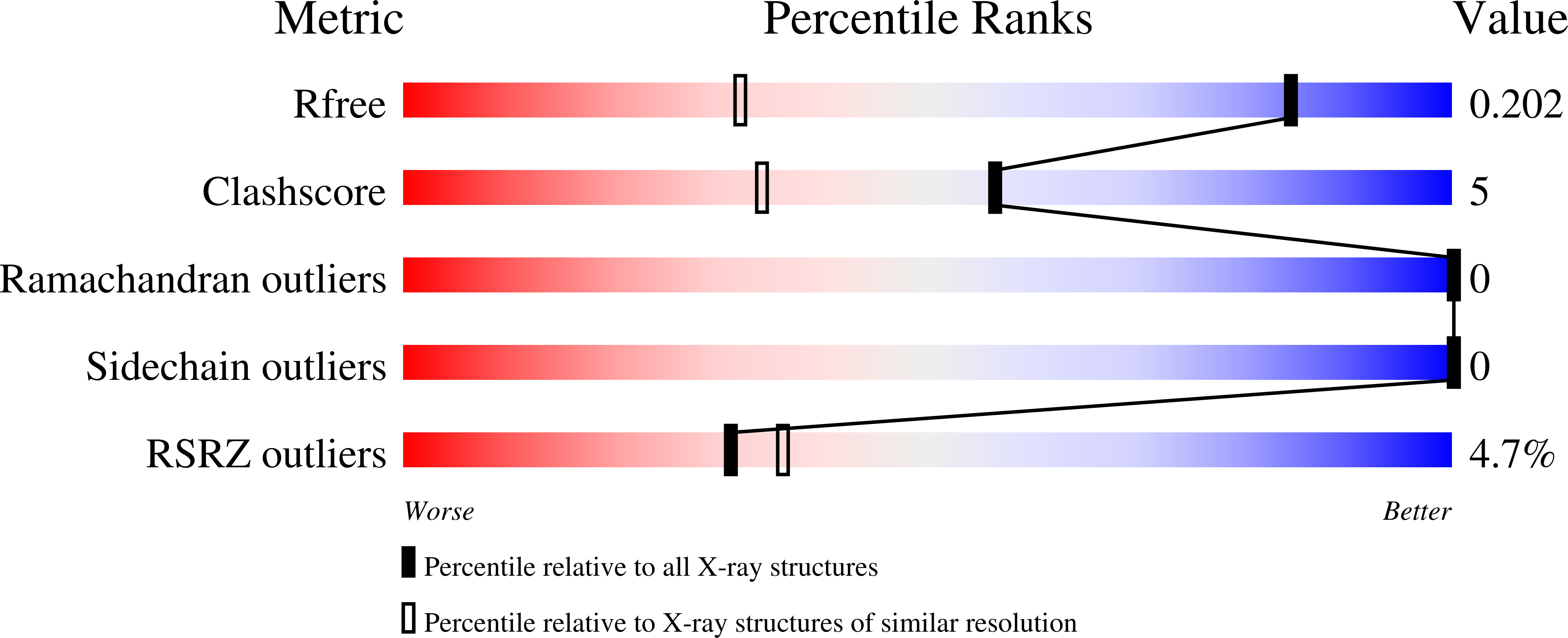
Deposition Date
2023-10-24
Release Date
2023-12-20
Last Version Date
2023-12-20
Entry Detail
PDB ID:
8UQS
Keywords:
Title:
Crystal structure of the Opossum p53 tetramerization domain
Biological Source:
Source Organism:
Monodelphis domestica (Taxon ID: 13616)
Host Organism:
Method Details:
Experimental Method:
Resolution:
1.35 Å
R-Value Free:
0.20
R-Value Work:
0.16
R-Value Observed:
0.17
Space Group:
P 21 21 21


